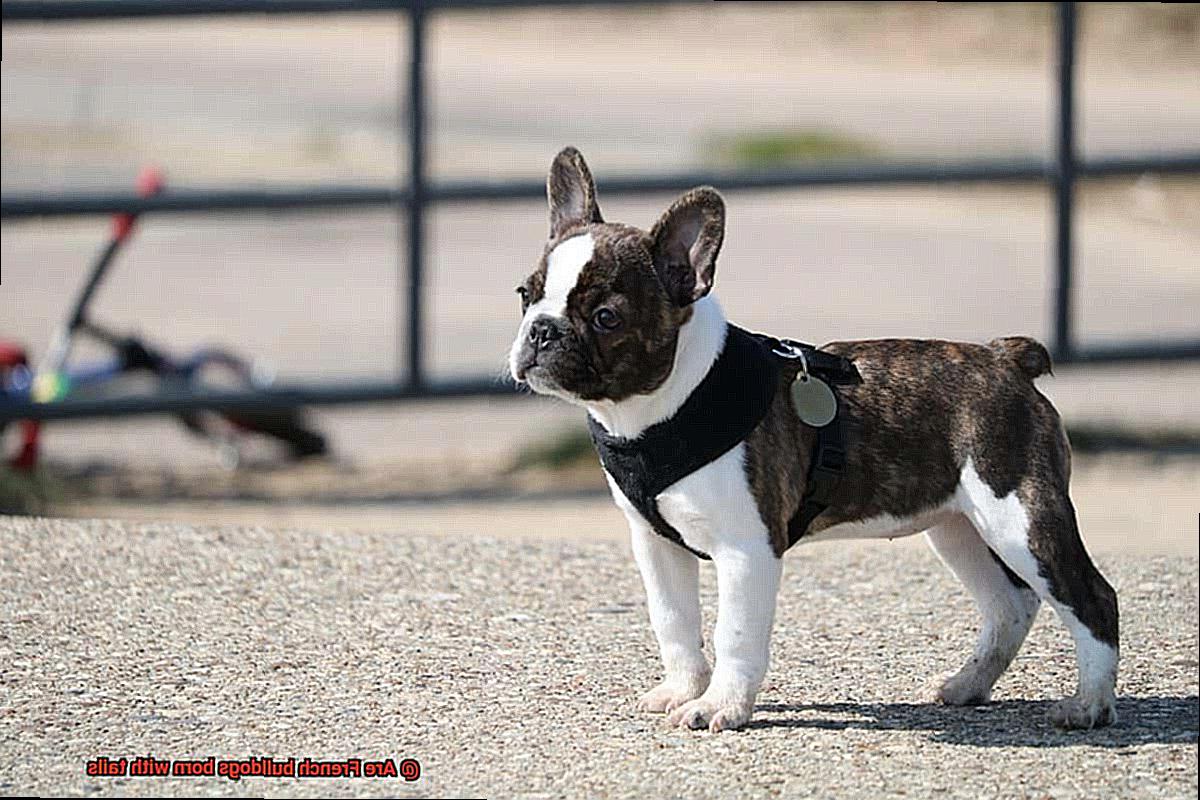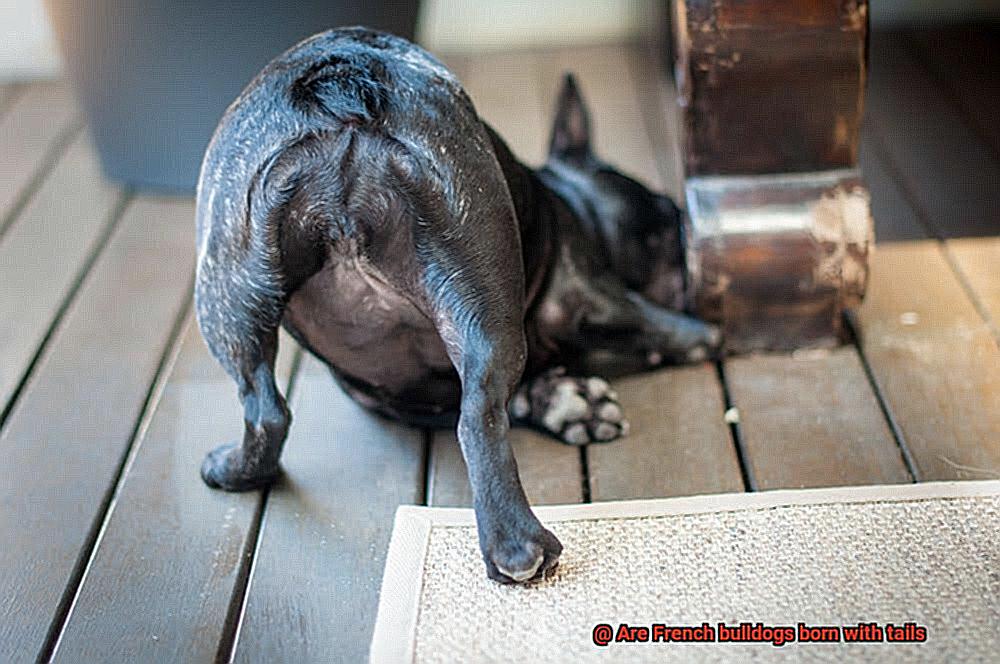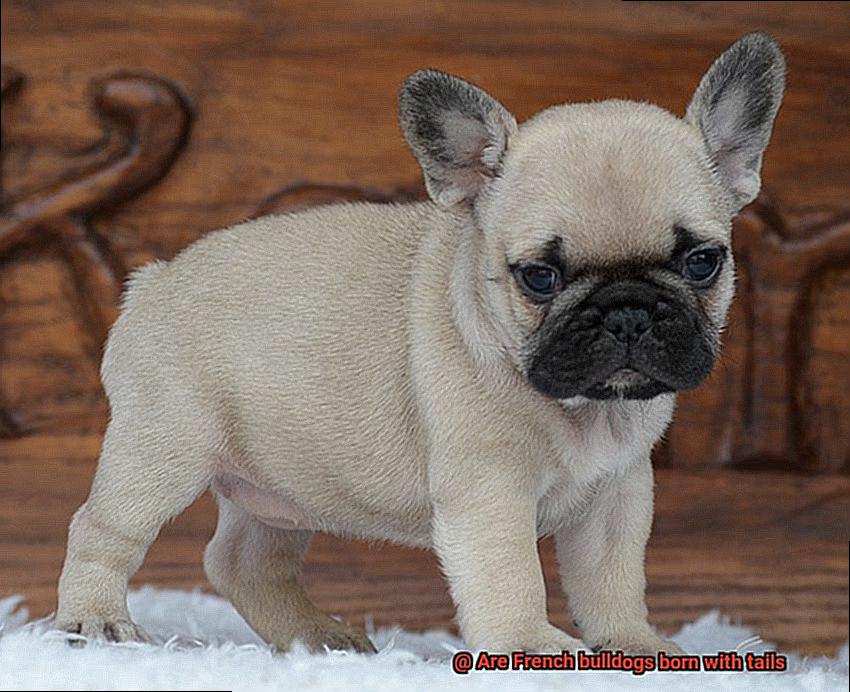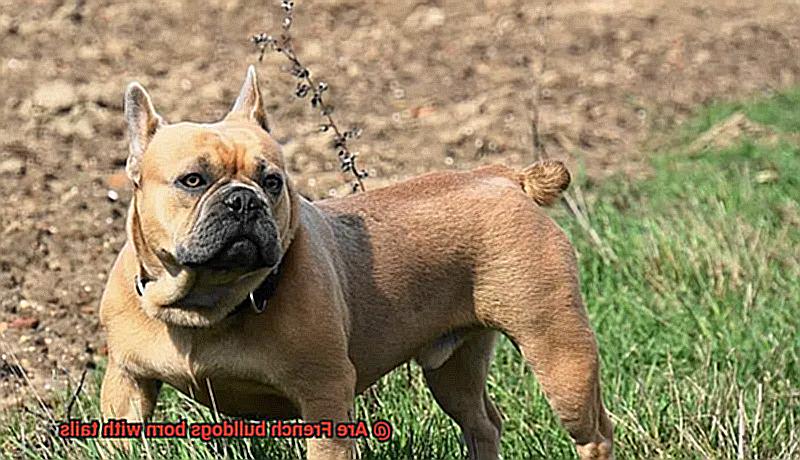Are French bulldogs born with tails?
Today, we’re diving headfirst into a topic that’s got French bulldog fanatics everywhere scratching their heads. We’re talking about those mischievous tails of Frenchies. Do these adorable pups come into the world flaunting their wagging wonders, or are they born without a tail in sight?
French bulldogs are like little bundles of joy that have stolen the hearts of dog enthusiasts across the globe. With their compact bodies, expressive eyes, and those unmistakable bat-like ears, you can spot a Frenchie from a mile away. But when it comes to their tails, things get interesting.
Get ready as we unravel the secrets behind these curly cues (or lack thereof) in our beloved French bulldogs. We’ll be shedding light on this mystery that has left many passionate Frenchie fans scratching their chins for ages. So buckle up and join us on this mini adventure into the world of Frenchie genetics as we uncover the truth about their tails. Let’s get wagging.
The Origin of the French Bulldog’s Screw Tail
Contents
Here, we will explore the theories surrounding the origin of the French Bulldog’s screw tail and shed light on this intriguing aspect of their appearance.
Theory 1: Inherited from English Bulldogs
One prevailing theory suggests that the screw tail in French Bulldogs can be traced back to their English Bulldog ancestors. During the 1800s, English Bulldogs often had screw tails, which were highly desirable traits. It is believed that breeders intentionally selected Bulldogs with screw tails for further breeding, leading to the perpetuation of this feature in their offspring.
Theory 2: Result of Genetic Mutations
Another theory proposes that the screw tail in French Bulldogs is not a direct inheritance from English Bulldogs but rather a result of genetic mutations. These mutations can occur naturally and give rise to variations in physical characteristics. It is possible that a spontaneous mutation resulted in the development of the screw tail in some French Bulldogs, and breeders then propagated this trait through selective breeding.
Variability in Tail Types:
Interestingly, not all French Bulldogs have screw tails. Some may have straight tails or even corkscrew tails. This variability suggests that other factors, such as genetic interactions or environmental influences, may play a role in determining the specific tail shape. It also supports the idea that the screw tail is not solely a genetic inheritance from their English Bulldog ancestors.
Health Implications:
While the screw tail is a defining characteristic of French Bulldogs, it is important to be aware of potential health issues associated with this feature. The tightly curled tail can sometimes lead to skin fold dermatitis and other related problems. Responsible breeders are now taking steps to minimize these issues by breeding French Bulldogs with less extreme tail curvature.
Conclusion:
The origin of the French Bulldog’s screw tail remains a subject of ongoing research and debate. Whether it is a direct inheritance from English Bulldogs or a result of genetic mutations, the screw tail adds to the breed’s unique charm. As owners, it is essential to prioritize the health and well-being of our French Bulldogs, ensuring that selective breeding practices consider both aesthetic appeal and functional attributes.
Variations in Tail Length and Shape
While the standard breed for Frenchies is a short and straight tail, it’s not uncommon to come across variations in tail length and shape. These variations are primarily a result of genetic factors that can lead to some fascinating tail characteristics.
Some French bulldogs may be born with longer tails than the standard. These longer tails can resemble the tails of other dog breeds, with a straight or slightly curved shape. It’s intriguing to see how these genetic mutations can manifest in such a distinctive way. On the other end of the spectrum, there are French bulldogs that sport extremely short tails, adorably referred to as “stumpy” tails. Each variation adds to the individuality and uniqueness of these lovable creatures.
It’s important to note that these variations in tail length and shape do not affect the overall health or well-being of our furry companions. French bulldogs with longer or shorter tails are just as capable of walking, running, and carrying out their normal activities as any other Frenchie. In fact, their unique tails only serve to enhance their charm and appeal.
Whether your Frenchie has a perfect “screw” or “corkscrew” tail, a longer tail that sets them apart, or a cute little stumpy tail that makes them extra special, embrace it. Each tail is a reflection of their genetic makeup and adds to their individuality. Responsible breeding practices prioritize the health and well-being of our furry friends, so let’s continue to care for them with love and admiration.
The Function of the French Bulldog’s Tail
The French Bulldog’s tail is more than just a cute accessory – it serves several important functions. Let’s dive into the details and uncover the secrets behind these adorable little tails.
First and foremost, communication is a key function of the French Bulldog’s tail. Like all dogs, Frenchies use their tails to express their emotions and intentions. A wagging tail usually signifies happiness and excitement, while a tucked tail may indicate fear or submission. The short and compact nature of their tails makes it easy for humans to read their body language and understand what they’re trying to tell us.
But the functions of the French Bulldog’s tail don’t stop there. It also plays a crucial role in balance. Despite their stocky build, these little guys are surprisingly nimble and agile. Their tails help them maintain stability and adjust their body position while running, jumping, or making quick turns. It’s like having a built-in gyroscope.
Temperature regulation is another function of the French Bulldog’s tail. Unlike humans who have sweat glands to cool down, dogs rely on other methods to beat the heat. The French Bulldog’s tail comes to the rescue by increasing surface area through its movements. By wagging or moving their tails, these clever canines can promote airflow around their bodies and cool themselves down more effectively.
Last but not least, the French Bulldog’s tail adds to their overall charm and appearance. The unique shape and style of their tails contribute to the breed’s distinctive look, making them easily recognizable and sought after by dog lovers worldwide.
The Appeal of the Screw Tail
This unique curl at the end of their tail adds an extra touch of allure to these beloved pets. In this article, we will delve into the reasons why the screw tail holds such an irresistible appeal for French bulldog enthusiasts.
Distinctive and Adorable Appearance:

The screw tail grants French bulldogs a distinct and unforgettable appearance. Resembling a corkscrew or a pig’s tail, it enhances their cuteness factor, rendering them even more captivating as companions. This extraordinary tail sets them apart from other breeds, instantly marking them as French bulldogs.
Endearing and Cute:
The screw tail exudes an endearing and irresistibly cute vibe. Its playful shape and curl evoke feelings of warmth and happiness when observed wagging in pure excitement. It comes as no surprise that this feature significantly contributes to the breed’s popularity as a cherished pet.

Variation in Size and Shape:
The screw tail exhibits delightful variations in both size and shape among French bulldogs. Some dogs boast a tight coil, while others possess a looser one. This diversity adds character and individuality to each dog, further enhancing their appeal for owners who value uniqueness.
Preservation through Selective Breeding:

Breeders and enthusiasts place immense importance on preserving the screw tail in French bulldogs through careful selective breeding. By wisely choosing dogs with desirable tail characteristics, breeders ensure that future generations will continue to display this captivating feature, perpetuating the breed’s charm.
Health Considerations:
While the screw tail is an enchanting attribute, it is crucial to note that not all French bulldogs are born with this feature. Some may have straight tails or tails with only a slight curl, which in no way diminishes their appeal or popularity. Furthermore, responsible breeders prioritize the overall health and quality of their dogs instead of solely focusing on tail appearance.
Potential Health Issues Related to the Screw Tail
The screw tail, that iconic feature of French Bulldogs, is undeniably adorable and instantly recognizable. However, beneath its charm lies a potential for health issues that owners should be aware of. In this blog post, we will delve into the world of screw tails and explore the range of potential health concerns that French Bulldog owners should keep in mind.
Skin Problems:
The tightly curled tail of French Bulldogs presents a heightened risk of skin problems. Its unique shape creates a moisture-prone breeding ground for dirt and bacteria, making bacterial and fungal infections a common occurrence. Think of it as an itch you can’t scratch. Regular cleaning and meticulous maintenance of the tail area are crucial to prevent these issues from escalating.
Screw Tail Dermatitis:
Another health issue associated with the screw tail is something called “screw tail dermatitis.” This condition arises when the skin around the tail becomes irritated and inflamed due to constant rubbing and friction against surfaces. Ouch. If left untreated, screw tail dermatitis can lead to hair loss, sores, open wounds, and even secondary infections. In severe cases, surgical intervention may be necessary to alleviate the pressure on the affected area.
Spinal Problems:
Believe it or not, that cute little screw tail can also be linked to spinal problems in French Bulldogs. The tight curling of the tail can cause abnormalities in the vertebrae or even compression of the spinal cord. This, in turn, results in pain, difficulties with walking or standing, and potentially urinary or fecal incontinence. Regular check-ups with your veterinarian are essential to monitor any potential spinal issues and provide appropriate treatment if necessary.
Proper Care for Your French Bulldog’s Tail
French Bulldogs are beloved for their unique physical features, including their short and adorable tails. However, these cute tails require proper care to avoid health issues. In this article, we will explore essential tips to ensure your French Bulldog’s tail remains healthy and problem-free.
Regular Cleaning:
Just like the rest of your Frenchie’s body, their tail needs regular cleaning. Gently wash the tail with a mild dog shampoo and warm water, paying extra attention to any folds or wrinkles. Rinse thoroughly to prevent skin irritation.
Drying:
After washing, it’s crucial to dry your Frenchie’s tail completely. Excess moisture can lead to skin infections or irritation. Use a clean towel or a low-heat blow dryer on the lowest setting to dry the tail thoroughly.
Ointments and Moisturizers:
Dry or irritated skin on your Frenchie’s tail may require special attention. Consult your veterinarian for suitable ointments or moisturizers. Avoid products with harsh ingredients or fragrances that can further irritate the skin.
Avoiding Tail Injuries:
French Bulldogs’ short tails are more prone to injuries than longer tails. Take precautions to prevent accidents that could harm your dog’s tail. Avoid allowing them to squeeze through tight spaces or engaging in rough games that could lead to tail injuries.

Regular Vet Check-ups:
Schedule regular check-ups with your veterinarian for your French Bulldog, including their tail. The vet will examine the tail for signs of infection, injury, or abnormalities. They may also trim the tail hair if necessary to keep it clean and prevent matting.
fwinyU_iIPI” >
Conclusion
In conclusion, French Bulldogs do not come into the world with tails. Instead, they are born sporting what is known as a “screw tail,” a characteristic unique to the breed that adds an extra touch of charm and allure.
The origins of this distinctive screw tail in French Bulldogs remain a hot topic of debate among experts. Some believe it was inherited from their English Bulldog ancestors, while others argue that genetic mutations are responsible. Regardless of its origin story, there’s no denying that the screw tail has become an iconic feature of French Bulldogs, highly coveted by enthusiasts far and wide.
Although the screw tail certainly contributes to the breed’s overall appeal, it’s crucial to be aware of potential health concerns associated with this trait. If not given proper care, the tightly curled tail can lead to skin fold dermatitis and other skin issues. Thankfully, responsible breeders are taking proactive measures by breeding French Bulldogs with less extreme tail curvature to minimize these risks.
To ensure your French Bulldog’s tail remains in tip-top shape, regular cleaning and drying are essential. Additionally, take precautions to prevent any injuries that could harm their delicate tails. Regular visits to the veterinarian are also crucial for monitoring any potential health issues related to this unique feature.




